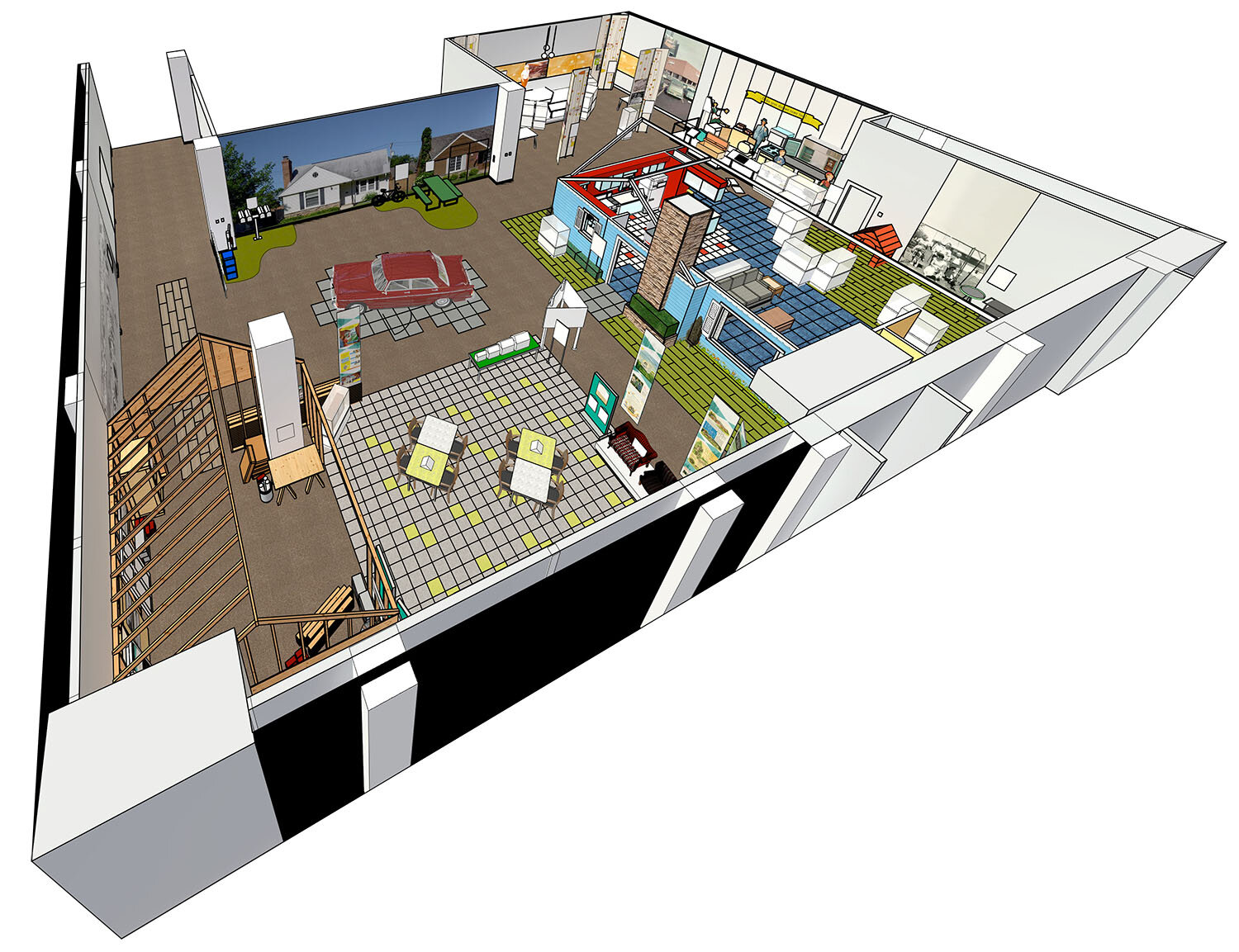SUBURBIA
Land of 10,000 Dreams
In 1950, approximately 70 percent of people in the Twin Cities metro lived in Minneapolis and St. Paul. By 2010, that figure had dropped to 20 percent. This dramatic shift from cities to suburbs took hold across the country and is seen by many historians as one of the most important events in US history.
What drew people to the suburbs in the first place? Did reality reflect the dream of suburban living? And what does suburbia look like today? Suburbia explored the dream and reality of Twin Cities suburbia — from ranch houses to redlining, malls to millennials, and cars to cul de sacs. It revealed the sometimes quirky, always fascinating history of this seemingly commonplace suburban environment.
Through firsthand accounts, immersive settings, multimedia interactives and vibrant displays, visitors could explore the lives of the people who moved to the suburbs, those who were excluded, and all the people in between. “In 1959, the average age of marriage was 19,” said Ellen Miller, exhibit developer. “Today, millennials are delaying the age of marriage and opting to live in the urban core. By looking back at suburban America, we hope to spark conversations about how the ideal of the ‘American Dream’ is changing.”
Click here to read the official MNHS Press Release
October 2015 - March 2016
Minnesota History Center
St. Paul, MN
***2016 American Association of Museums MUSE Award, Interactive Kiosks, Silver for Suburbia - Touch Table Interactive, Minnesota Historical Society***





















